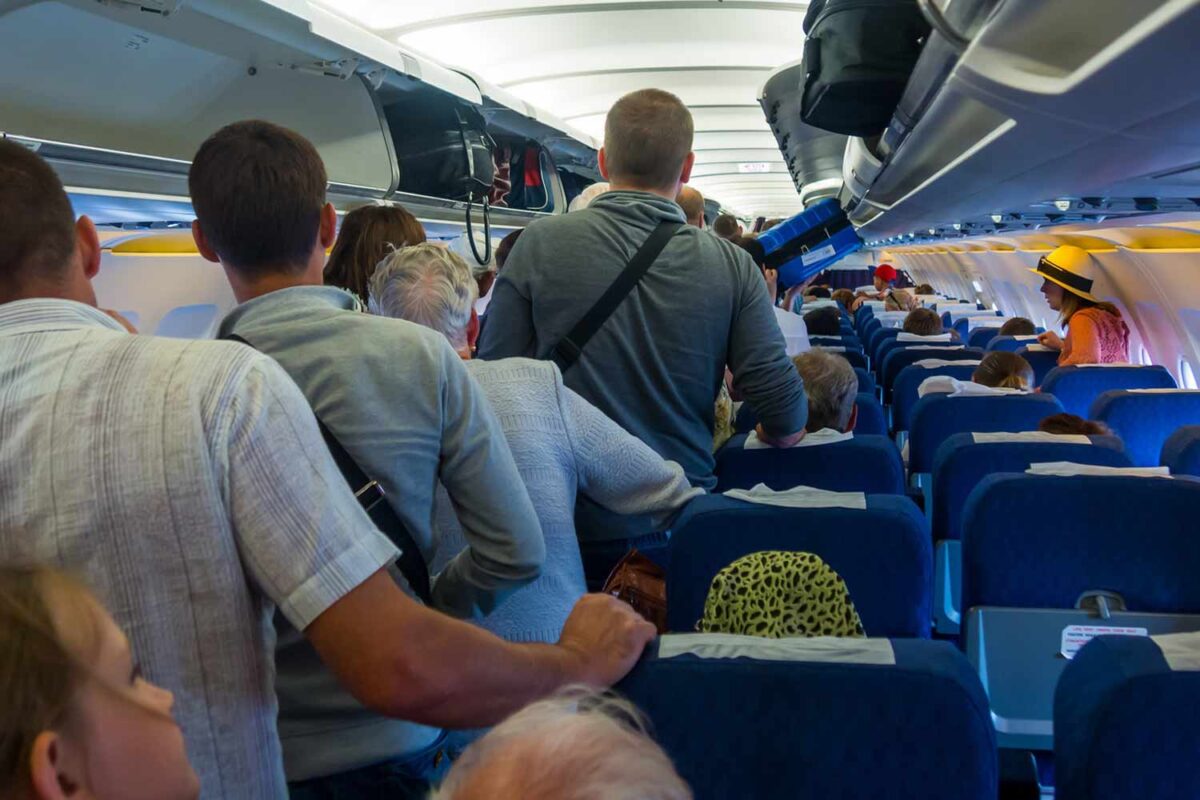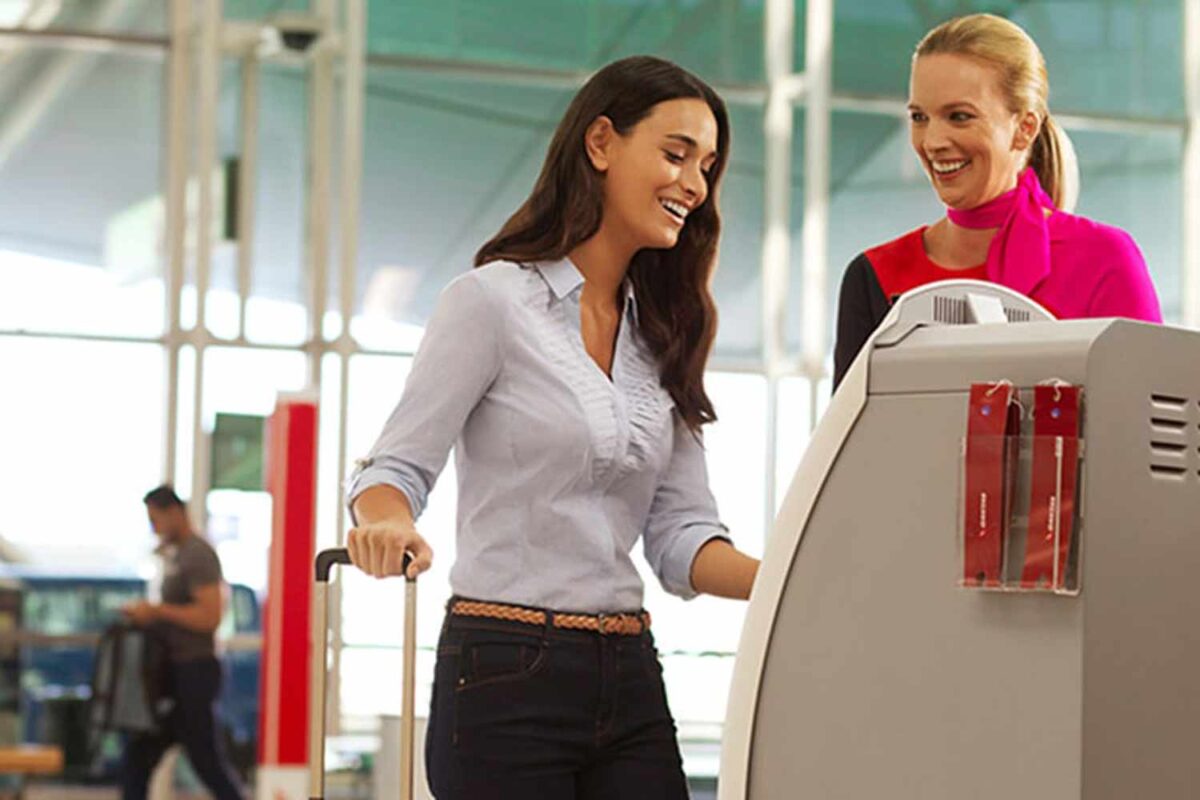We’ve made leaps and bounds in the in-flight space over the last three decades. You no longer have to breathe in cigarette smoke. You can now watch thousands of hours of
entertainment at the click of a button. You have (admittedly, still pretty slow and expensive), wifi. You can even cancel out the noise of crying babies with soundproof headphones. Oh, and you can check in online.
But despite all this, we are still stuck in the dark ages with certain things. We still have pissed off passengers opening the doors and sliding down the inflatable slide. We still have flight attendants wrestling drunken passengers. We still have people doing chin-ups on the overhead lockers. And we still spend 5 minutes awkwardly hunched over at the end of the flight waiting for the doors to open, fearful someone in a row behind us might overtake us if we were to sit down.
Worst of all: we still have to queue to use the toilet. On some crowded long haul flights, this can require passengers to undergo some quite strategic planning as to when they are going to use the bathroom, so as to avoid an awkward 20 minutes standing in the aisle, pretending to stretch, while actually busting for the toilet. Or worse: a Mexican Standoff with another desperate loo user who arrives at the same moment as you do.

Given how advanced technology is, it seems a bit ridiculous we are yet to find a smooth solution to this. But fear not: a solution is “likely” in the works, Anthony Harcup, senior director at design house Teague recently told DMARGE.
Harcup said that just like how rideshare apps are able to use data to streamline the user experience, airlines will eventually be able to do the same with meal deliveries and toilet usage.
“In the same way that ridesharing services have used GPS, Smart Devices and AI driven system design to increase the utilization and efficiency of cars and drivers on the ground, the digitization of the airline industry will increase the efficiency of passenger management and de-congest the passenger experience,” Harcup told DMARGE.
“This will likely extend to the use of bathrooms on-board and the delivery of meal service too. Already some airlines are implementing smart systems of boarding (this was rapidly accelerated by the social-distancing requirements throughout the pandemic).”
Anthony Harcup
Harcup didn’t specify what this would look like, exactly, but we choose to believe it will be in the form of a robot tapping you on the shoulder and telling you it’s time to go and pee…
It’s not just this part of the travel experience artificial intelligence is due to disrupt. Speaking about robots being tested at Heathrow (to guide passengers around), Andrei Danescu, co-founder and CEO of BotsAndUs told CNBC in 2020: “Automation has already significantly changed how airports function, across all areas of operation — from passenger services to luggage maneuvering, security and many more.”
“What we see as a key next step is actually bringing all these together so they can communicate and collaborate with each other, offering a seamless and safe experience from the car park to boarding the flight.”
Andrei Danescu

Even at the time of writing, robots (though you might not think of them as robots, but rather computers) are ‘working’ at airports all around the globe, checking people in, scanning bags and providing concierge services.
CNBC reported in 2020: “Nearly half of the world’s airlines and 32% of its airports are seeking a partner to further investigate robotics and automated vehicles in the next three years, according to the 2018 Air Transport IT Insights survey.”
“By 2030 robots are expected to have replaced check-in processes, according to a report published… by UK-based inventory management company Vero Solutions.”
CNBC
Flashpack also predicts there will be robot hotels, driverless everything, AI travel agents, no more passports and cleaner, more efficient travel in the future, all thanks to robots.
Let the revolution begin.
Read Next
